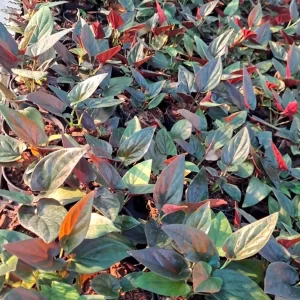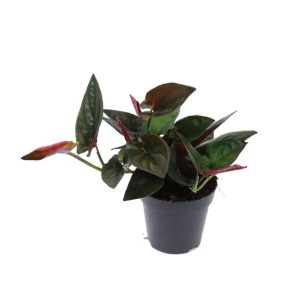- English
- Chinese
- French
- German
- Portuguese
- Spanish
- Russian
- Japanese
- Korean
- Arabic
- Irish
- Greek
- Turkish
- Italian
- Danish
- Romanian
- Indonesian
- Czech
- Afrikaans
- Swedish
- Polish
- Basque
- Catalan
- Esperanto
- Hindi
- Lao
- Albanian
- Amharic
- Armenian
- Azerbaijani
- Belarusian
- Bengali
- Bosnian
- Bulgarian
- Cebuano
- Chichewa
- Corsican
- Croatian
- Dutch
- Estonian
- Filipino
- Finnish
- Frisian
- Galician
- Georgian
- Gujarati
- Haitian
- Hausa
- Hawaiian
- Hebrew
- Hmong
- Hungarian
- Icelandic
- Javanese
- Kannada
- Kazakh
- Khmer
- Kurdish
- Kyrgyz
- Latin
- Latvian
- Lithuanian
- Luxembou..
- Macedonian
- Malagasy
- Malay
- Malayalam
- Maltese
- Maori
- Marathi
- Mongolian
- Burmese
- Nepali
- Norwegian
- Pashto
- Persian
- Punjabi
- Serbian
- Sesotho
- Sinhala
- Slovak
- Slovenian
- Somali
- Samoan
- Scots Gaelic
- Shona
- Sindhi
- Sundanese
- Swahili
- Tajik
- Tamil
- Telugu
- Thai
- Ukrainian
- Urdu
- Uzbek
- Vietnamese
- Welsh
- Xhosa
- Yiddish
- Yoruba
- Zulu
- Kinyarwanda
- Tatar
- Oriya
- Turkmen
- Uyghur

Osisi ime ụlọ na-ewu ewu na-acha odo odo na nnukwu mgbanwe bụ Syngonium Podphylum, aha sayensi. Ọ bụ ala na oke mmiri ozuzo na Central na South America, n'ihi ya ọ nwere mkpa ọ dị maka ọnọdụ gburugburu ebe obibi n'ụlọ. A ga-enwe ọnọdụ ihu igwe maka ndị na-ahụ maka padophylik na-ekwu na ya na isiokwu a yana ọkụ, ọnọdụ okpomọkụ, iru mmiri, mmiri, mmiri na-edozi na akụkụ ndị ọzọ.

Syngon
Ọnọdụ ọkụ
Syngonium Podophpyllum chọrọ obere ọkụ dị ka ọ na-eme nke ọma na ndo nke oke ohia mmiri ozuzo na ebe obibi ya. Ọ na-ahọrọ ọkụ na-enweghị isi mana enweghị ndidi maka anwụ na-acha. Ìhè dị egwu nwere ike ịgba ọkụ ma ọ bụ disndaliour odo. N'ihi ya, na ndozi ụlọ, ekwesịrị idobe podophyLum na-esote windo; Ekwesịrị izere anwụ anwụ. Ọkpụkpụ ụbọ akwara ma ọ bụ ụgbụ na-ekwe ka otu gbanwee ike ọkụ ma ọ bụrụ na ọ na-enwu.
In an environment lacking enough light, Syngonium podophyllum’s development rate can slow down and leaves might become smaller. Plant growth lights may help to augment the light, particularly in winter or in interior locations with inadequate lighting conditions, therefore preserving the healthy development of plants. Though it is rather flexible, syngonium still need appropriate light to guarantee its regular development and exquisite leaf colour.
Achọrọ maka okpomọkụ
Ọ bụ ezie na Songnonium bụ mgbanwe na-agbanwe agbanwe na usoro nke okpomọkụ, oke okpomọkụ na-eto n'etiti 18 na 25 ogo Celsius. Ọ bụghị oyi na-eguzogide ọgwụ, a ga-eme ka a ga-eme ka ọ na-ekpo ọkụ n'oge oyi. A ga-eji nwayọọ nwayọọ na-agbada na-enwe ọrịa Syngonium mgbe ọnọdụ dị n'okpuru 10 ogo Celsius, nke nwere ike inye ya akwụkwọ edo edo ma ọ bụ daa. May nwere ike iji kpo oku ma ọ bụ tọọ osisi ahụ n'ime oghere ime ụlọ na-ekpo ọkụ iji mee ka okpomoku dị mma.
Ọzọkwa, sygronium enweghị mmasị na gburugburu ọnọdụ okpomọkụ. N'ihi ya, ị ga-akpachara anya iji gbochie mgbanwe ikuku na-eme mgbe ị na-akụ na mpaghara ebe ikuku na-eme ka ikuku ma ọ bụ na-ekpo ọkụ. Ijigide okpomọkụ mgbe niile ga-enyere osisi ahụ aka ịba ụba na ahụ ike. Ekwesịrị iji ikuku dị mma na-echebara echiche na oge okpomọkụ dị elu iji nyere aka zere oke ikuku na-emetụta mmepe osisi.
Ikike iru mmiri
Sangonium nwere obi iru mmiri dị elu ma nweekwa mkpa dị ukwuu maka ya. Ọ na - abụkarị ihe dị elu na ụwa anụ ahụ, iru mmiri bụ ihe dị ezigbo mkpa iji mepụta ụlọ. Mmadu kwesiri idobe iru mmiri nke kachasi elu di elu kariri 60%. Oke iru mmiri dị ala nwere ike ibute akwụkwọ osisi a na-akpọ nkụ ma ọ bụ na-asacha ya na mmiri.
Otu nwere ike bulite iru mmiri na gburugburu ebe a kpọrọ nkụ n'ọtụtụ ụzọ. Ihe kacha mma bụ iji ihu igwe, nke ga-eme ka ikuku ma tinye osisi ahụ na gburugburu mmepe ahụ dabara adaba. Ọzọkwa, itinye osisi ahụ n'elu efere kpuchie ya na petbeble mod nwere ike inyere aka bulie iru mmiri. Goozọ dị mma ọzọ bụ spraying mgbe nile; Karịsịa n'oge oyi, ọ na-enyere bulie iru mmiri gburugburu osisi.
Dị mkpa
Synopsis chọrọ maka ọgaranya na organic ihe, ala nke ọma. Ọ dabara na eto eto na ala agwakọta dị elu na humus. Ala a ọ bụghị naanị na-enye nri zuru oke mana na-echekwa iru mmiri ziri ezi. N'ikwu okwu n'ozuzu, ngwakọta ala pụtara maka ifuru ahịhịa dị mma karịa ala na - agbaze na-agbaze na ahịa.
Inwere ike itinye ụfọdụ perlite ma ọ bụ vermiculite na ala iji mee ka mmiri ya dịkwuo elu. Nke a na-ekwe nkwa na mmiri na-adọba ngwa ngwa ma na-enyere aka izere mmebi mgbọrọgwụ metụtara. N'otu ntaju anya ugboro ugboro nke ala na-enye aka chekwaa ihe ndị ọ na-emekwa, ya mere na-ezere mmebi mebiri emebi na ire ere.
Njikwa Water
Syngonium’s watering schedule must maintain equal moisture in the soil while preventing water buildup. Usually, one waits to water until the ground surface starts to dry. Make sure the drainage holes at the bottom of the pot can efficiently drain extra water during watering. Make sure the bottom of your flower container has no pool and choose one with drainage holes to help stop water gathering.
The plant requires more water throughout the growth season (spring and summer), hence it should be watered more often. The plant’s development rate slows down in fall and winter, hence the water need also declines. One could reduce the frequency of watering at this point. Excessive watering could lead to root rot; so, it should be changed in line with the real condition of the soil.
Njikwa nke spamilization
N'oge uto, syngonium dị mkpa maka nri maka nri n'ihi ya enwere ike ịme ya na imeru ihe n'ókè. Osisi na-eto karịa n'oge opupu ihe ubi na ọkọchị; Yabụ, otu nwere ike itinye nri nri ndị ziri ezi otu ugboro n'ọnwa. N'ihi ịgbalịsi ike mmepe nke osisi, a pụrụ ịlalata ugboro ugboro mgbe ọ bụla ọnwa abụọ na ọdịda na oyi. Họrọ fatịlaịza na ihe ndị dị mkpa dị ka nitrogen, phospherous, na potassium mgbe ị na-amụ aka iji nyere osisi aka ịzụlite ahụike ma na-enye ndị mmadụ na-akpaghị aka.
Kpachara anya ịghara ịda mba n'oge usoro oriri na ọganizations dị ka nke a nwere ike imerụ osisi mgbọrọgwụ. Tupu amịrị amị, sachaa mmiri kpamkpam iji gbochie nri fatịlaịza siri ike na-emebi mgbọrọgwụ. N'otu oge ahụ, mkpụrụ fatịlaịza nwere ike ịdị nkọ mgbe ị na-akọ nri ma na-eme ka ọ belata na nkwa na ihe ọkụkụ na-ewere nri.
Njikwa mmezi ọzọ
Along with regular pruning and pest and disease management, Syngonium’s upkeep calls for. Frequent trimming encourages fresh development and helps plants keep a healthy form. Cut off in time, overlong or withering leaves may be maintained lovely and healthy for the plants.
An other crucial component of maintenance management is control of pests and diseases. Among Syngonium’s common pests and illnesses include aphids, red spiders, and fungal infections. Should pests and illnesses be discovered, suitable pesticides or fungicides may be used for treatment. Maintaining a clean and airy surroundings is also crucial at the same time to stop the development of pests and illnesses.

Syngonium Podphylum
With great demands for its growth environment—light, temperature, humidity, soil, water, fertilisation, etc.—syngonium is an adaptive and lovely leaf plant. Knowing and satisfying these environmental factors guarantees Syngonium’s good development and attractiveness. In home care, closely monitoring the condition of the plant and modifying it depending on its requirements will provide a suitable growth environment for Syngon ka ọ bụrụ ebe obibi.



